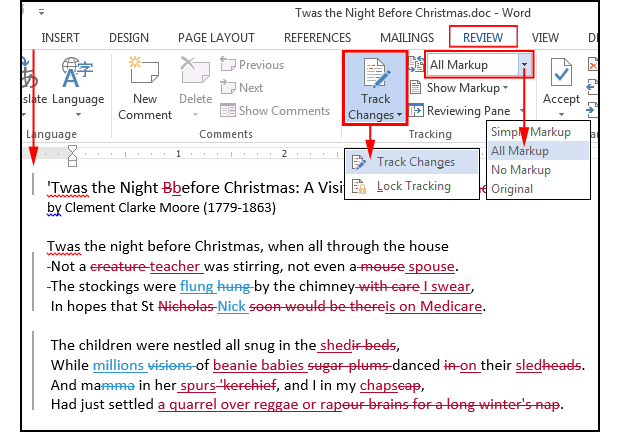

If you want to see the xml for a docx file directly: rename it as. _tags(p._p, "del")īeware that this only works for a subset of "tracked changes", but it might be the basis of a more general solution. It uses _tags to remove surrounding "smartTag" and "ins" tags, and promote the contents and _elements to remove the whole "del" elements. I needed a quick solution to make text surrounded by "smart tags" visible to docx's text property, and found that the solution could also be adapted to make some tracked changes visible.

Conclusion We use different types of documents every day. Now, you can edit the new word document as you wish. Once the button above Track Changes is green, tracked changes are now on. Once you have pressed tracked changes it should turn green, as shown in the image below. Step 5: Finally, save the new document with your own requirements and changes. Under the Tracking dropdown find Track Changes. Step 4: Then press Ctrl + V button to paste the copied texts into the blank Word document. Runs = (node.text for node in tree.getiterator(TEXT) if node.text) Step 3: Create a new blank Word document and open it. """Return text of a paragraph after accepting all changes""" Hope it can help the souls lost like I was: from docx import Document
Understand tracking in word document code#
The trick was to get p._p.xml to get the XML of the paragraph and then using "etienned" code on that (i.e retrieving all the elements from the XML code, which contains both regular runs and blocks). I was having the same problem for years (maybe as long as this question existed).īy looking at the code of "etienned" posted by and the attributes of Paragraph, I have found a solution to retrieve the text after accepting the changes.


 0 kommentar(er)
0 kommentar(er)
